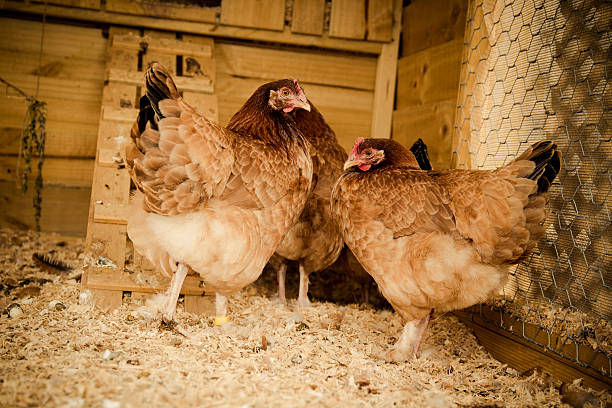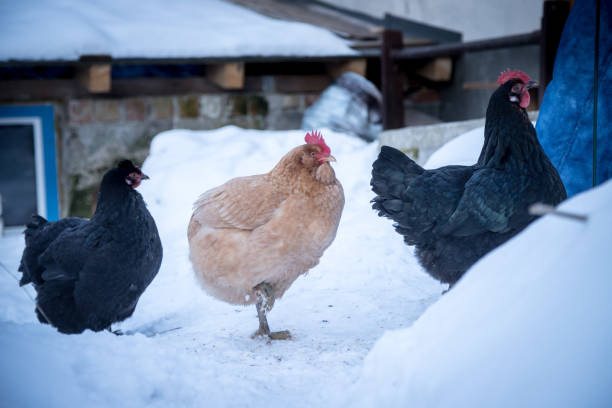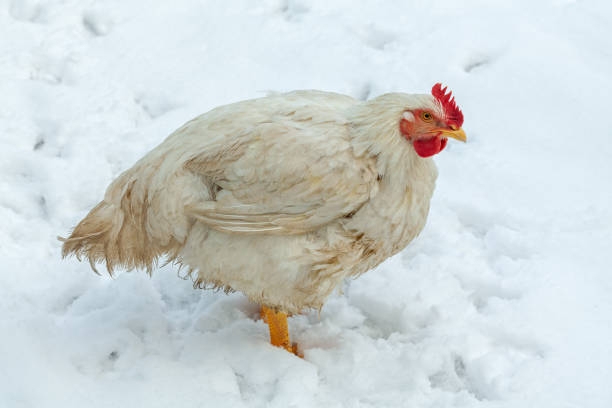If you're raising chickens, keeping the coop clean and warm is likely at the top of your list. The Deep Litter Method for backyard chicken coops is an effective, natural way to keep your chickens warm in winter, reduce coop cleaning frequency, and even create a rich, compostable bedding. Here's a complete guide on the Deep Litter Method, how it works, the benefits, and the best bedding materials to use.
1. What is the Deep Litter Method?
The Deep Litter Method is a low-maintenance, composting bedding approach where organic bedding materials, like wood shavings or straw, accumulate in the coop. Rather than cleaning out the bedding frequently, chicken owners only remove it a few times a year, allowing the bedding to break down naturally. This composting process generates heat, helping to keep the coop warm, while also creating high-quality compost that’s great for your garden.

2. Benefits of the Deep Litter Method
Using the Deep Litter Method for chicken coops offers several advantages:
- Natural Heat Production: As the bedding composts, it releases warmth, helping maintain a comfortable temperature in the coop during colder months.
- Less Frequent Cleaning: With deep litter, you only need to clean out the coop a few times a year, making it easier to manage.
- Improves Coop Air Quality: The natural composting process can help reduce ammonia odors, provided the bedding is kept dry and turned regularly.
- Creates Compost for Gardens: Deep litter bedding is a valuable addition to any garden, rich in nitrogen and other nutrients for growing plants.
- Reduces Waste: By composting the bedding rather than discarding it, you’re making efficient use of resources, which is better for the environment.
3. How Does the Deep Litter Method Work?
To implement the Deep Litter Method in a chicken coop:
- Start with a Clean Coop: Begin with a clean, dry coop floor and add a layer of suitable bedding (usually 4-6 inches deep).
- Add Fresh Bedding Regularly: Every couple of weeks, add more bedding to absorb moisture and prevent strong ammonia odors.
- Turn the Bedding: Use a rake or pitchfork to stir and aerate the bedding periodically. Turning it encourages the composting process and prevents compaction.
- Monitor Moisture Levels: A key factor in the Deep Litter Method’s success is maintaining proper moisture levels. If the bedding is too wet, it won’t compost properly and can become a breeding ground for bacteria.
- Remove and Replace Twice a Year: Every 6-12 months, remove all bedding, give the coop a thorough clean, and start the process over again.

4. Best Bedding Options for the Deep Litter Method
Choosing the right bedding is crucial for the Deep Litter Method to work effectively. Here are some top choices:
- Pine Shavings: A popular choice, pine shavings are absorbent, readily available, and compost well.
- Straw: Straw is economical and composts well, but it needs to be monitored for moisture as it can get soggy quickly.
- Hay: Hay can work if mixed with other bedding types, though it tends to mat and doesn’t compost as easily on its own.
- Leaves: Dried leaves are a natural, compostable bedding option that can be layered with shavings or straw.
- Wood Chips: Coarse wood chips help aerate the bedding, supporting composting and reducing odor.

5. What Materials NOT to Use for Deep Bedding
While many organic materials can work well, there are some to avoid due to safety and performance issues:
- Cedar Shavings: Cedar has a strong odor that can be harmful to chickens’ respiratory systems.
- Newspaper or Shredded Paper: These materials tend to mat and don’t compost well, making them unsuitable for deep litter.
- Sand: Sand doesn’t compost and doesn’t provide the insulation or absorption needed for deep litter.
- Treated Wood Chips: Treated or chemically treated wood can release harmful toxins as it breaks down.
6. Pros and Cons of the Deep Litter Method
While the Deep Litter Method has many benefits, it may not be suitable for every coop or every chicken owner. Here are some pros and cons:
Pros:
- Saves Time and Effort: Less frequent cleaning means more time to enjoy your chickens.
- Composts Naturally: Creates a nutrient-rich compost for gardening.
- Provides Insulation: Keeps the coop warmer in winter, ideal for colder climates.
Cons:
- Requires Regular Monitoring: To prevent ammonia buildup, it’s essential to turn the bedding and add new material when needed.
- Can Be Too Warm in Hot Climates: In warmer regions, the added warmth may be uncomfortable for your chickens.
- Not Ideal for Wet Coops: If your coop has moisture issues, deep litter can become damp and odorous, posing health risks for your chickens.

Conclusion
The Deep Litter Method is a tried-and-true approach for maintaining a clean and warm chicken coop while generating beneficial compost for the garden. It requires some monitoring and effort, but the benefits—such as reduced cleaning, improved coop insulation, and rich compost—make it a worthwhile option for many backyard chicken keepers.
If you’re ready to try the Deep Litter Method, start with quality bedding and ensure proper ventilation to maximize results. With the right setup, your chickens will stay cozy, and your garden will thrive!




Laisser un commentaire
Tous les commentaires sont modérés avant d'être publiés.
Ce site est protégé par hCaptcha, et la Politique de confidentialité et les Conditions de service de hCaptcha s’appliquent.